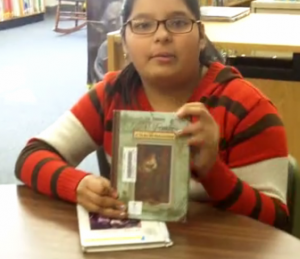It was with great excitement that I came into a leadership role in the El Paso PLP cohort. I had followed PLP’s work for years and when Sheryl Nussbaum-Beach asked me to come on board in support of El Paso educators, I jumped at the chance. I have friends in this Texas district. I visited and work in schools there and really come to feel at home with these teachers. El Paso’s Director of Instructional Services, Tim Holt, is a good friend. Tim and his colleagues understand the value of demystifying technology and making it work for educators in a nuts and bolts way. Who wouldn’t want to work with these leaders to help El Paso’s teachers engage their students with Web 2.0 strategies?
I am new to the PLP community and make freshman mistakes daily but I am learning. Sheryl and crew are amazing in their zeal for doing what communities need and are willing to make and remake themselves to serve teachers. The PLP approach is well designed and thought out.
After years of research and thinking about the best ways to build communities of support and learning for educators, the PLP team has arrived at a process that is pretty amazing. The structures and approaches are based on a constantly evolving best practice that represents the very best model I have seen. They are receptive to adjusting their approach for the success of the partner community, based on feedback from the educators they are working with.
The El Paso district is notable for the open-mindedness of teachers and administrators, who are truly “student focused” and and willing to try anything that benefits kids. There is an absence of ego and an all-hands-on-deck philosophy that allows conversations that would take much longer in some other systems. They are busy, as educators are across the country, but they find time to continue to learn and support the learning of others.
Building a new learning support community is a benevolent act and something that happens at its own speed.
Every community is unique and grows at its own pace. Growth and development are affected by external variables that sometimes result in stops and starts. That’s school. In El Paso, you see periods of great intensity and enthusiasm, where conversations explode and you can feel the teacher energy rising. What is truly exciting is seeing teachers post their classroom examples. This is crucial stuff because it allows the entire community to see, reflect on and support new approaches and techniques.
Pictures and video are rich assets in virtual communities. If words are the street signs in a learning city, pictures and video are the buildings, trees, taxis and other visual artifacts. Often teachers are shy about sharing, as if they are somehow bragging on themselves. My message, and PLP’s message, is that sharing what you are proud of is crucial to the learning of other teachers. We want to support each other and celebrate the bold new steps teachers are taking.
I picture those busy teachers preparing their kids for the TAKS tests and worrying over their preparedness.
Teachers today have so many worries, and the moments that the El Paso educators spend on their PLP Ning community are precious. As a community leader, I appreciate every keystroke they invest in collaboration and ultimately their own learning. Building a community is a group investment, and it doesn’t pay dividends until it reaches a critical mass of investors. A useful, responsive and supportive community, full of resources and examples, is my definition of critical mass.
The benefit that comes from the building process, outside of any eventual products, is found in the bonding that occurs among and between cohort members as they take the preliminary and sometime awkward steps onto the construction site. Every voice matters, and posts and reflections from shy or hesitant teachers are pure gold. Those first posts, however substantive, are critically important because they build upon each other and draw more and more collaborators into the mix.
What I’m enjoying is watching as the community begins to really stir to life. The PLP community, team leaders and fellows circle the flock like border collies, looking for lost sheep.
Masterful guides reply to posts and encourage further thinking while cohort members banter back and forth. Every one of these contributions helps ensure that this virtual space will become a new and powerful asset for members. I watch as community coaches Robin Ellis, Marsha Ratzel and others ask just the right questions to extend a teacher’s thinking and learning, and I am inspired to do the same. And when we begin to see community members take the lead in asking questions and supporting others, we know we’ve got our community framework in place.
The focus of our El Paso cohort is digital story telling. Our two webinar sessions with Alan Levine yesterday were powerful. The session was titled 50 Ways to Tell a Story, and it was full of practical advice and resources for teachers who need to engage students in curriculum in meaningful, effective ways. The participants were attentive and tossing out ideas and questions in such enthusiastic ways as to make it fun just to watch. As I go back into our Ning community to attempt to extend that learning, I know that I am surrounded by other passionate leaders and educators who will help me.
Keep an eye on this El Paso community because the examples that come out of it will inspire many other educators. We’ll be sharing some of them here.
Kevin-Honeycutt
Latest posts by Kevin-Honeycutt (see all)
- El Paso cohort-stirrings of greatness - May 25, 2011
- What an amazing think tank! - February 18, 2011


